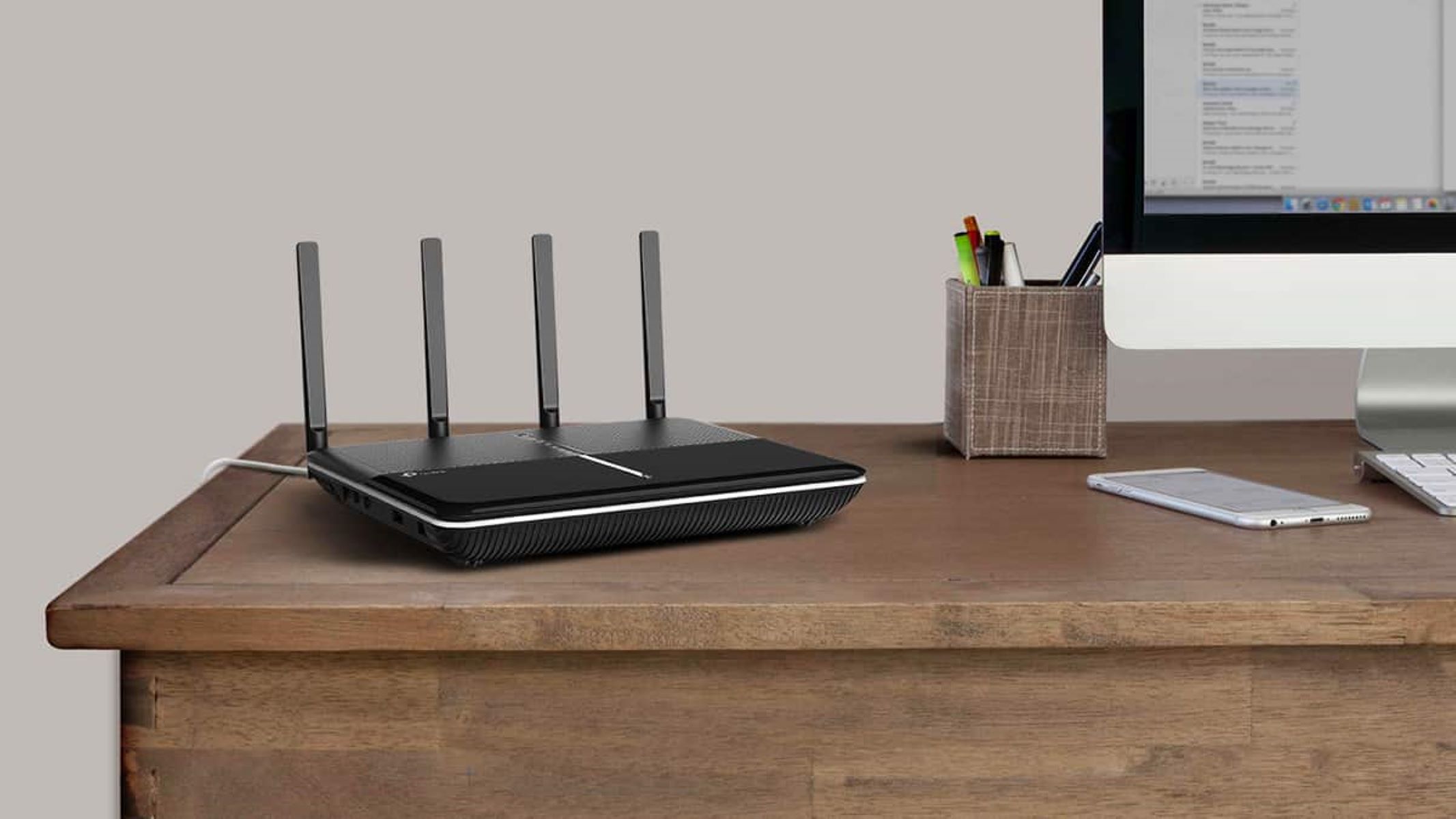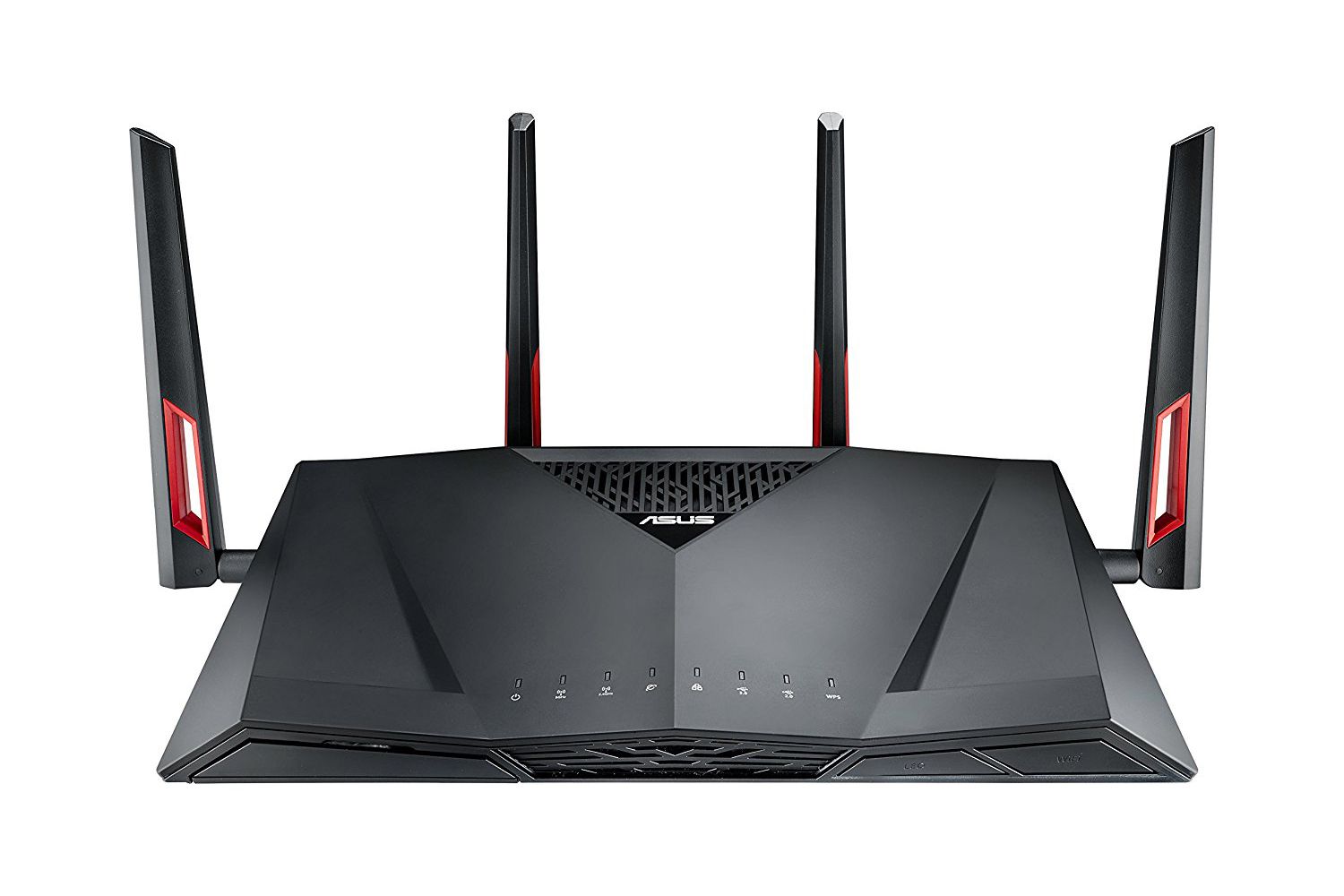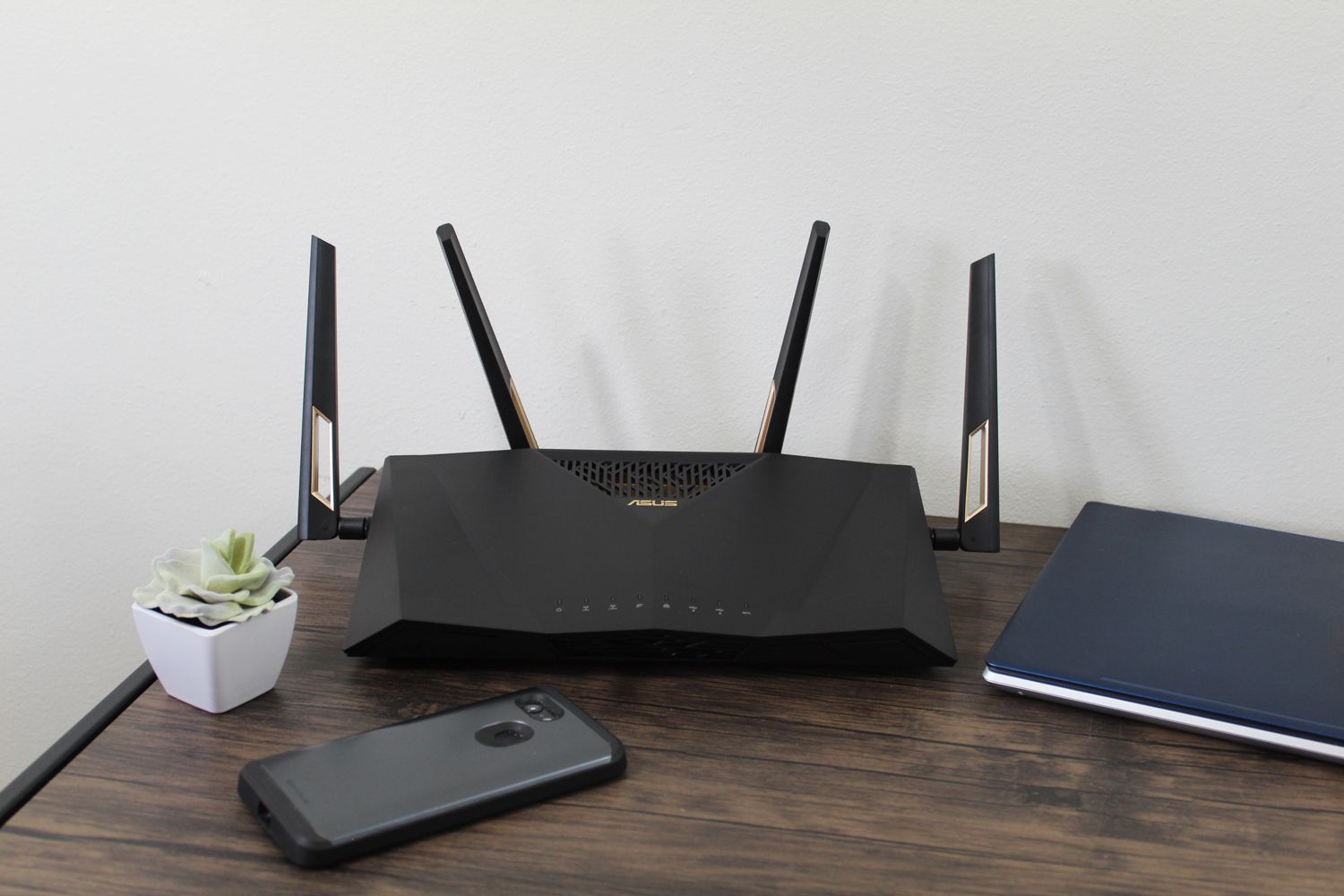Introduction
A wireless router serves as the backbone of our internet connection, allowing us to connect multiple devices and enjoy a seamless online experience. However, like any electronic device, wireless routers have a limited lifespan. Understanding the factors that can affect the lifespan of a wireless router is crucial in maintaining a reliable and efficient network in our homes or offices.
There are several factors that contribute to how long a wireless router will last, including the quality and brand, usage patterns, environmental conditions, and firmware updates and support. By taking these factors into consideration, we can make informed choices when purchasing a new router and implement practices that will prolong its lifespan.
In this article, we will explore the key factors that affect the lifespan of a wireless router, discuss the signs that indicate a router is nearing the end of its life, and provide practical tips on how to extend the lifespan of your wireless router.
So, if you’re curious about how long your wireless router will last and how to make the most out of it, keep reading to discover the insights and advice that will help you optimize your router’s performance and longevity.
Factors that Affect the Lifespan of a Wireless Router
Several key factors play a role in determining the lifespan of a wireless router. By understanding and considering these factors, you can make informed decisions when purchasing a new router and take measures to prolong its lifespan.
1. Quality and Brand: The quality and brand of a wireless router can significantly impact its lifespan. Routers from reputable brands often have better build quality and use higher-quality components, resulting in a longer lifespan. Investing in a reliable and well-known brand can save you the hassle of frequent replacements.
2. Usage Patterns: How you use your wireless router can also affect its lifespan. If you have a large number of devices connected to the router and constantly stream high-bandwidth activities such as gaming or HD video streaming, the router may experience greater strain and wear. On the other hand, if your usage is minimal, the router may last longer.
3. Environmental Conditions: The environment in which the router operates can impact its longevity. Routers that are exposed to extreme temperatures, humidity, or dust may deteriorate more quickly. It is important to place your router in a well-ventilated area, away from heat sources, and periodically clean it to prevent dust buildup.
4. Firmware Updates and Support: Regular firmware updates from the manufacturer provide important security fixes, performance improvements, and compatibility enhancements for your wireless router. Routers that receive consistent support and updates tend to have a longer lifespan compared to those that are neglected by the manufacturer.
By considering these factors when purchasing a wireless router and throughout its lifespan, you can make choices that will maximize its longevity and ensure a reliable internet connection for years to come.
Quality and Brand
The quality and brand of a wireless router play a critical role in determining its lifespan. When it comes to electronic devices, investing in a reputable brand and opting for higher quality routers can make a significant difference in terms of longevity.
Well-known brands are often known for their commitment to quality and reliability. They have established a reputation for producing routers that are built to last. These routers are designed with better materials and components, ensuring a higher level of durability and performance.
Higher quality routers also tend to have more advanced features and technologies. These features can contribute to an extended lifespan by improving the router’s ability to handle increased network traffic, provide better coverage, and adapt to changing connectivity standards.
Additionally, routers from reputable brands often undergo rigorous testing and quality control processes before they are released to the market. This ensures that the routers meet the manufacturer’s standards and can withstand the demands of everyday use.
While routers from lesser-known brands might seem more affordable, they often lack the same level of quality and reliability. These routers may be more prone to hardware failures, firmware issues, and compatibility problems with newer devices. As a result, they may have a shorter lifespan and require more frequent replacements.
Investing in a high-quality router from a reputable brand may initially require a higher upfront cost. However, in the long run, it can save you money by reducing the need for frequent upgrades and replacements. It also provides peace of mind, knowing that you have a reliable and durable router that will stand the test of time.
When considering purchasing a wireless router, it is worth researching and reading reviews to identify reputable brands and models that have a history of delivering high-quality products. By prioritizing quality and brand reputation, you can ensure that your router will have a longer lifespan, providing a stable and efficient network for your home or office.
Usage Patterns
The way you use your wireless router can have a significant impact on its lifespan. The intensity and frequency of your network usage can affect the performance and longevity of the router.
If you have a high number of devices connected to your router and engage in activities that require substantial bandwidth, such as online gaming, HD video streaming, or large file downloads, your router may be under constant strain. This increased workload can cause the router’s components to heat up, potentially leading to shorter lifespan.
On the other hand, if your usage is relatively light, with only a few devices connected and minimal bandwidth-intensive activities, your router may experience less strain and last longer. In such cases, the components are not constantly operating at their maximum capacity, allowing them to work more efficiently and reducing wear and tear.
It is also worth noting that the simultaneous use of multiple devices can affect the router’s performance and lifespan. Each device connected to the router requires processing power, which can impact its overall performance. Therefore, if you have numerous devices connected at once, the router may experience increased stress and potentially have a shorter lifespan.
To optimize the usage patterns and extend the lifespan of your wireless router, consider implementing the following practices:
- Limit the number of devices connected to the router at a given time, especially during bandwidth-intensive activities.
- Try to reduce the use of bandwidth-heavy applications or ensure they are spread out over time to prevent overwhelming the router.
- Consider setting up a separate network for devices that require constant connectivity, such as security cameras or smart home devices, to alleviate some of the strain on the primary network.
- Regularly monitor your network’s traffic and address any potential bottlenecks or bandwidth issues that may be negatively impacting the router’s performance.
By being mindful of your usage patterns and taking steps to optimize them, you can prolong the lifespan of your wireless router and ensure a smoother and more reliable network experience for all your connected devices.
Environmental Conditions
The environment in which a wireless router operates can have a significant impact on its lifespan. Factors such as temperature, humidity, and dust can affect the performance and longevity of the router’s components.
Extreme temperatures can be detrimental to electronic devices, including routers. Excessive heat can cause internal components to overheat and degrade over time. Similarly, extremely cold temperatures can affect the functionality of the router’s circuitry. It is important to place your router in a well-ventilated area and away from direct sunlight or sources of heat, such as radiators or other electronic devices.
Humidity is another environmental factor that can affect routers. High humidity levels can lead to moisture buildup inside the router, potentially corroding the circuitry and causing damage. Conversely, low humidity levels can cause static electricity, which may also harm the components. It is advisable to keep your router in a dry environment with moderate humidity levels to ensure its longevity.
Dust and debris can accumulate inside a router over time, obstructing airflow and causing the components to overheat. This can result in decreased performance and a shortened lifespan. Regularly cleaning your router by gently dusting or using compressed air can help prevent dust buildup and maintain optimal airflow.
In addition to temperature, humidity, and dust, other environmental factors such as proximity to water sources or exposure to vibrations or shocks should also be considered. Routers should be kept away from areas prone to water spills or moisture, as well as locations where they may incur physical damage. Taking precautions to protect your router from environmental hazards can significantly extend its lifespan.
By maintaining an ideal environment for your router, you can ensure that it operates at its optimum level and lasts longer. Placing it in a well-ventilated area, keeping it away from extreme temperatures and humidity, and regularly cleaning it will help mitigate environmental risks and preserve the longevity of your wireless router.
Firmware Updates and Support
Regular firmware updates and manufacturer support are crucial factors for maximizing the lifespan of a wireless router. Firmware updates are essential as they provide security fixes, performance improvements, bug fixes, and compatibility enhancements. These updates ensure that your router remains up-to-date with the latest technological advancements and addresses any vulnerability that may arise over time.
Manufacturers frequently release firmware updates to address potential vulnerabilities, improve network performance, and add new features. These updates help prolong the lifespan of the router by enhancing its overall functionality and security.
Typically, when you purchase a router from a reputable brand, you can expect regular firmware updates for a certain period. This support period can vary between manufacturers and models. It is important to check the manufacturer’s website or support documentation to understand the expected lifespan of firmware updates for your router.
Keeping your router’s firmware up-to-date is relatively straightforward. Most modern routers have a user-friendly interface that allows you to check for updates and install them with just a few clicks. Regularly checking for firmware updates and installing them promptly will ensure that your router remains secure and optimized.
In addition to firmware updates, timely support from the manufacturer can significantly impact the lifespan of a router. A manufacturer that provides responsive customer support and assistance with technical issues can help prolong the router’s life. If you encounter any difficulties or have questions about your router, being able to rely on the manufacturer’s support can make a significant difference.
It is worth noting that the availability and frequency of firmware updates and the level of manufacturer support can vary among different brands and models. Before purchasing a router, it is advisable to research the manufacturer’s track record in terms of firmware updates and customer support to ensure you make an informed decision.
By regularly updating your router’s firmware and having access to manufacturer support, you can maximize the lifespan of your wireless router and continue to enjoy a secure and reliable network connection over an extended period.
Signs that Indicate Your Router is Deteriorating
Like any electronic device, wireless routers can deteriorate over time due to various factors such as age, usage, and environmental conditions. Recognizing the signs of a deteriorating router is important so that you can take appropriate actions before it impacts your internet connection. Here are some common signs that indicate your router may be nearing the end of its life:
- Frequent disconnects or slow speeds: If your router frequently drops the internet connection or experiences slower speeds than usual, it could be a sign of a deteriorating router. Over time, the router’s internal components may wear out, resulting in reduced performance and reliability.
- Overheating or unusual noises: If you notice that your router becomes excessively hot to the touch or emits unusual noises like buzzing or crackling sounds, it could be a sign of hardware issues. Overheating can lead to performance issues and even cause permanent damage to the router’s internal components.
- Incompatibility with newer devices: As technology advances, newer devices may have updated connectivity standards that your old router cannot support. If you experience compatibility issues or are unable to connect newer devices to your network, it could be an indication that your router is no longer able to keep up with the demands of modern devices.
- Outdated security features: Router manufacturers regularly release firmware updates to address security vulnerabilities. If your router is no longer receiving firmware updates or has outdated security features, it may put your network at risk. Security breaches and vulnerabilities may indicate that your router is nearing the end of its lifespan.
If you notice any of these signs, it is advisable to consider replacing your router. However, before making a decision, it’s a good idea to rule out other potential causes, such as issues with your internet service provider or modem. Connecting directly to the modem with a wired connection can help determine if the router is the source of the problem.
Remember that routers have a limited lifespan, and it is natural for them to deteriorate over time. By recognizing the signs of a deteriorating router, you can proactively address the issue and ensure a reliable and efficient internet connection for your home or office.
Frequent Disconnects or Slow Speeds
One of the most common signs that indicate your router may be deteriorating is experiencing frequent disconnects or slow internet speeds. If you notice that your internet connection drops frequently or your browsing experience has become sluggish, it could be a sign that your router is reaching the end of its lifespan.
A deteriorating router may struggle to maintain a stable connection with your devices, leading to frequent drops in connectivity. This can be frustrating, especially if you rely heavily on a consistent internet connection for work, streaming, or gaming.
In addition to frequent disconnects, a deteriorating router may also result in slow internet speeds. You may observe a decrease in the download and upload speeds, making it difficult to stream high-quality videos or causing delays in loading web pages.
There are several possible reasons behind these issues. Over time, the internal components of the router can wear out and become less efficient. The router’s processing power may not be able to keep up with the demands of multiple connected devices, resulting in slower speeds and occasional disconnects.
Interference from other electronic devices or neighboring Wi-Fi networks can also contribute to the problem. As the router deteriorates, it may struggle to cope with interference, leading to reduced signal strength and slower speeds.
If you consistently experience frequent disconnects or slow speeds, it is important to troubleshoot the issue before concluding that your router is deteriorating. Here are a few steps you can take:
- Restart your router to refresh its settings and clear any temporary glitches that may be affecting its performance.
- Check for firmware updates from the manufacturer and ensure that your router is running the latest version. Updated firmware can address performance issues and improve stability.
- Reposition your router to a central location within your home or office. This can improve the signal strength and mitigate potential interference.
- If possible, connect your device directly to the router with an Ethernet cable to determine if the slow speeds or disconnects are specific to the Wi-Fi connection.
- If the issues persist after troubleshooting, it may be time to consider replacing your router to restore reliable internet connectivity.
Remember, frequent disconnects and slow speeds are not always indicative of a deteriorating router. However, if you have exhausted troubleshooting options and the issues persist, it is worth considering a replacement to ensure a stable and efficient internet connection.
Overheating or Unusual Noises
Another sign that your router may be deteriorating is if you notice signs of overheating or unusual noises coming from the device. These symptoms can indicate hardware issues that can negatively impact the performance and lifespan of your router.
Overheating can occur when the internal components of the router generate excessive heat, often due to prolonged usage or inadequate ventilation. If your router feels unusually hot to the touch, it could be an indication that it is struggling to dissipate heat properly. This can lead to performance degradation and even permanent damage to the components over time.
Unusual noises emanating from your router, such as buzzing, crackling, or clicking sounds, can be signs of internal component failure or loose connections. These noises are not normal and can suggest that the router’s hardware is deteriorating or malfunctioning.
It’s important to note that not all routers are completely silent during operation. Some routers have fans or other cooling mechanisms that generate a low hum, which is generally considered normal. However, if the noises are loud, persistent, or different from the usual operating sounds, it may indicate underlying issues with the router.
To address overheating and unusual noises, consider the following steps:
- Ensure that your router has proper ventilation and is not obstructed by objects or surrounded by heat-generating devices. If necessary, you can use a cooling pad or a small fan to improve airflow around the router.
- Check for any dust accumulation on the router’s vents or internal components. Dust can hinder the cooling process and contribute to overheating. Regularly clean your router by gently dusting or using compressed air to remove any buildup.
- If you suspect loose connections or hardware issues, contact the manufacturer or consult a professional for assistance. Attempting to fix internal hardware issues without proper knowledge or expertise can cause further damage.
- Consider relocating your router to a cooler area, away from direct sunlight or heat sources, to mitigate overheating issues.
If overheating or unusual noises persist despite taking these measures, it may be a sign that your router is deteriorating and requires replacement. Continuing to use a deteriorating router can lead to more severe performance issues and potential device failure.
By addressing overheating symptoms and addressing unusual noises promptly, you can help prolong the lifespan of your router and maintain a reliable and efficient internet connection.
Incompatibility with Newer Devices
As technology advances, newer devices often come with updated connectivity standards and requirements. If you find that your router is unable to connect or fully support newer devices, it could be a sign of incompatibility and an indication that your router is deteriorating.
One common example of incompatibility is the inability to connect to devices that use the latest Wi-Fi standards, such as Wi-Fi 6 (802.11ax). Older routers may only support older Wi-Fi standards, like Wi-Fi 4 (802.11n) or Wi-Fi 5 (802.11ac). If your router lacks support for newer standards, you may experience slower speeds or connectivity issues when trying to connect newer Wi-Fi 6 compatible devices.
In addition to Wi-Fi standards, compatibility issues can also arise with other technologies and protocols used by newer devices. For example, your router’s network ports may not support newer Ethernet standards, resulting in limited connectivity options and slower speeds for devices that require higher data transfer rates.
Moreover, as the number of connected devices increases, older routers may struggle to handle the increased network traffic. They may not have sufficient processing power or memory to effectively manage a large number of devices simultaneously. This can lead to performance issues, network congestion, and even frequent disconnections.
Addressing incompatibility with newer devices can be challenging since it is often a hardware limitation of the router itself. However, there are a few steps you can take:
- Check for firmware updates from the manufacturer. In some cases, firmware updates may include compatibility enhancements that allow the router to work more effectively with newer devices.
- If firmware updates are not available or do not resolve the compatibility issues, consider upgrading to a newer router model that supports the latest Wi-Fi and connectivity standards.
- When purchasing a new router, verify the compatibility with the devices you plan to connect, ensuring it supports the necessary technologies or protocols needed for optimal functionality.
Keep in mind that technology is constantly evolving, and devices will continue to be released with newer standards and requirements. Upgrading your router periodically to stay compatible with the latest devices can help future-proof your network and ensure seamless connectivity for all your devices.
If you find that your current router is consistently incompatible with newer devices, it may be a sign that your router is deteriorating and is no longer able to meet the demands of modern technology. Investing in a new router that can accommodate the requirements of newer devices will ensure a smoother and more efficient network experience.
Outdated Security Features
Another sign that your router may be deteriorating is the presence of outdated security features. With the constant advancement of hacking techniques and security threats, it is essential to have robust security measures in place to protect your network and connected devices.
Routers with outdated security features may lack the necessary defenses to safeguard against modern threats. Manufacturers regularly release firmware updates to address newly discovered vulnerabilities, improve encryption protocols, and provide enhanced security features. If your router is no longer receiving these critical updates, it could be at a higher risk of being compromised.
Outdated security features can leave your network susceptible to various attacks, such as unauthorized access, data breaches, and malware infections. Attackers may exploit known vulnerabilities in older router models and gain unauthorized access to your network, compromising your privacy and potentially stealing sensitive information.
Additionally, older routers may have weaker encryption methods, such as outdated versions of WPA (Wi-Fi Protected Access) or no support for newer encryption protocols like WPA3. Weak encryption can make it easier for unauthorized individuals to intercept or decipher your network traffic, compromising the security of your data.
Updating your router’s firmware regularly helps ensure that you have the latest security patches and improvements. It is crucial to check the manufacturer’s website or documentation to ensure your router is still supported and that firmware updates are being released. If the manufacturer has stopped providing firmware updates for your router model, it may be a sign that your router is outdated and no longer receives the necessary security enhancements.
If you find that your router has outdated security features and is no longer receiving firmware updates, it is advisable to consider replacing it with a newer model that offers up-to-date security measures. Look for routers that support the latest encryption standards, have active firmware updates, and adhere to best security practices.
By having a router with updated security features, you can minimize security risks, protect your network and devices from potential threats, and ensure a safer online experience for you and your connected devices.
Ways to Extend the Lifespan of Your Router
While the lifespan of a wireless router is ultimately finite, there are several steps you can take to maximize its longevity. By adopting good practices and implementing preventive measures, you can extend the lifespan of your router and maintain a reliable and efficient network connection. Here are some ways to achieve this:
- Positioning and Ventilation: Proper router placement and ventilation are crucial for reducing heat buildup and preventing overheating. Place your router in a central location, away from obstacles and sources of heat. Ensure the router has adequate airflow around it, allowing it to cool properly.
- Regular Updates and Maintenance: Keeping your router’s firmware up to date is essential for optimal performance and enhanced security. Regularly check for firmware updates from the manufacturer and install them promptly. Additionally, periodically perform maintenance tasks such as restarting your router and checking for any dust or debris accumulations that could obstruct ventilation.
- Protection against Power Surges: Power surges can damage electronic components, including routers. To protect your router, consider using a surge protector or connecting it to an uninterruptible power supply (UPS). These devices provide protection against sudden voltage spikes or power outages that could harm your router.
- Monitor and Control Network Traffic: Excessive network traffic can strain your router and contribute to its deterioration. Regularly monitor your network’s traffic and address any possible bandwidth-hogging devices or applications. Limit the number of devices connected to your router at once, especially during high-bandwidth activities.
- Secure Your Network: Implementing proper network security measures can help protect your router from unwanted access and potential threats. Set a strong and unique password for your Wi-Fi network and utilize encryption protocols such as WPA2 or WPA3. Regularly review and update your network’s security settings to ensure they align with the latest best practices.
- Perform Regular Checkups: Routinely check the health of your router by monitoring its performance and conducting periodic speed tests. If you notice any significant degradation in performance or connectivity issues, troubleshoot the problem and address it promptly.
- Replace Antiquated Hardware: If your router is outdated, lacks essential features, or doesn’t support newer standards, it may be time to consider upgrading to a more advanced model. Newer routers often have improved performance, increased reliability, and better security features that can contribute to a longer lifespan.
By following these practices, you can significantly extend the lifespan of your router and enjoy a reliable internet connection for a longer duration. Remember that even with proper care, routers will eventually need to be replaced as technology evolves and their components age. However, by implementing these steps, you can make the most out of your router and ensure optimal performance until it’s time for an upgrade.
Positioning and Ventilation
Proper positioning and ventilation are crucial factors in extending the lifespan of your wireless router. By ensuring the router is positioned correctly and has adequate airflow, you can prevent overheating and improve its overall performance and longevity.
Firstly, consider the placement of your router. Ideally, it should be positioned in a central location within your home or office. This allows for a more even distribution of the Wi-Fi signal, ensuring that all areas have optimal coverage. Placing the router near the center of the space also reduces the distance and interference between the router and connected devices.
Moreover, keep your router away from obstacles that can block or weaken the Wi-Fi signal, such as walls, large furniture, or appliances. These physical obstructions can hinder the router’s ability to transmit and receive signals, resulting in reduced range and slower speeds.
In addition to proper positioning, ventilation is vital for maintaining the optimal temperature of the router. Routers generate heat during operation, and if this heat is not dissipated properly, it can lead to performance issues and even hardware failures.
Ensure that your router has adequate ventilation around it. Avoid enclosing it in tight spaces or hiding it behind objects. Restricting airflow can cause the router to accumulate heat and impede its ability to cool itself. If possible, provide some space around the router to allow natural air circulation.
Excessive heat can shorten the lifespan of the router’s internal components. If you notice that your router becomes unusually hot to the touch, it is a sign that the router is not properly ventilated. Consider moving it to a better location or using additional cooling solutions such as a small fan or a cooling pad to prevent overheating.
Regularly cleaning your router can also contribute to proper ventilation. Over time, dust and debris can accumulate on the router’s vents, obstructing airflow. Use a soft cloth or compressed air to gently clean the router, removing any dust or dirt buildup. This simple maintenance task helps ensure optimum performance and prevents overheating.
By placing your router in an optimal position and ensuring proper ventilation, you can minimize heat buildup, enhance its performance, and prolong its lifespan. Remember to periodically check the positioning and cleanliness of your router to maintain a stable and efficient connection for your home or office.
Regular Updates and Maintenance
Regular updates and maintenance are key to extending the lifespan of your wireless router. Keeping your router’s firmware up to date and performing routine maintenance tasks ensures optimal performance, enhanced security, and a longer lifespan for your device.
Manufacturers often release firmware updates for routers to address security vulnerabilities, improve performance, and add new features. These updates are crucial for protecting your network from emerging threats and ensuring the router remains compatible with evolving technologies. Make it a habit to check for firmware updates regularly and install them promptly to keep your router up to date.
Most modern routers have a built-in user-friendly interface that allows you to easily check for firmware updates. Simply access the router’s settings through a web browser and navigate to the firmware section. Follow the instructions provided by the manufacturer to install the latest updates.
In addition to firmware updates, regular maintenance tasks help ensure that your router operates at its best. Here are a few maintenance practices you should consider:
- Restart your router: Periodically restarting your router can help clear temporary glitches and improve its performance. This simple step can resolve minor issues and ensure a smooth operation.
- Clean the router: Dust and debris can accumulate on the router’s vents and internal components, hindering proper airflow and leading to overheating. Regularly clean your router with a soft cloth or compressed air to remove any dust or dirt buildup.
- Check network settings: Perform a periodic check of your router’s network settings to ensure they align with your preferences and security requirements. Review your Wi-Fi network’s name and password, encryption settings, and guest network configurations.
- Monitor network traffic: Keep an eye on your network traffic by using monitoring tools provided by the router or third-party applications. Monitoring network activity helps you spot any unusual or suspicious behavior that may indicate a security breach or excessive use of bandwidth.
- Review connected devices: Regularly review the list of devices connected to your router and make sure only authorized devices have access to your network. Remove any unfamiliar or unwanted devices to prevent unauthorized access and ensure optimal network performance.
By regularly updating your router’s firmware and performing routine maintenance, you can ensure that it operates at its best, providing a stable and secure internet connection. These simple but effective practices can significantly extend the lifespan of your router and help you get the most out of your investment.
Protection against Power Surges
Protecting your wireless router against power surges is a crucial step in extending its lifespan and ensuring its continued functionality. Power surges, which are sudden increases in electrical voltage, can damage electronic devices, including routers, and shorten their lifespan. By implementing the right safeguards, you can safeguard your router from potential damage.
The most effective way to protect your router from power surges is to use a surge protector or an uninterruptible power supply (UPS). These devices are designed to absorb and redirect excess electrical energy, ensuring that only safe levels of power reach your router.
A surge protector is a cost-effective solution that can be plugged into an electrical outlet. It has multiple outlets where you can connect your router and other devices. The surge protector acts as a barrier, diverting excess voltage away from your router and preventing it from being damaged.
If you live in an area prone to power outages or fluctuations, consider using a UPS. A UPS not only regulates the power supply to your router but also provides backup power during a power outage. This ensures that your router remains operational, even during interruptions, preventing sudden shutdowns and potential damage.
When choosing a surge protector or UPS for your router, consider the power rating and the number of outlets that accommodate your devices. Look for devices with built-in surge protection indicators or alarms that alert you when the protection circuitry has been compromised.
In addition to using surge protectors or UPS devices, here are a few additional tips to protect your router from power surges:
- Unplug your router during severe thunderstorms or when you know power fluctuations are likely to occur.
- Invest in whole-house surge protection systems that provide protection for all electrical circuits within your home.
- Avoid using cheap or counterfeit power cables or adapters as they may not offer adequate protection against power surges.
- If you encounter frequent power surges in your area, consider contacting an electrician to assess your home’s electrical system and suggest additional protective measures.
By taking proactive steps to protect your router against power surges, you can significantly extend its lifespan and ensure uninterrupted network connectivity. Implementing surge protection measures not only safeguards your router but also shields other valuable electronics in your home from potential damage caused by sudden voltage spikes.
Conclusion
Understanding the factors that affect the lifespan of a wireless router and implementing measures to extend its longevity is essential for maintaining a reliable and efficient network connection. By considering the quality and brand of your router, monitoring usage patterns, optimizing environmental conditions, and keeping up with firmware updates and support, you can maximize the lifespan of your router.
Recognizing the signs of a deteriorating router, such as frequent disconnects, slow speeds, overheating, unusual noises, incompatibility with newer devices, and outdated security features, allows you to take timely actions. Whether it’s replacing the router, troubleshooting issues, or upgrading to a newer model, addressing these signs helps ensure a stable and secure internet connection.
Additionally, practicing proper positioning and ventilation, performing regular updates and maintenance tasks, and protecting your router against power surges are crucial in prolonging its lifespan. By implementing these measures, you can optimize the router’s performance, enhance network security, and prevent premature failure.
Remember that while these practices can significantly extend the lifespan of your router, it is important to acknowledge that routers have a finite lifespan. Technology advances rapidly, and eventually, your router may become outdated or no longer able to meet the demands of modern devices. Regularly assessing the performance, compatibility, and security of your router will help you determine when it’s time for an upgrade.
By adopting these strategies and being proactive in maintaining and updating your router, you can maximize its lifespan and enjoy a reliable and efficient network connection for your home or office. Invest in a high-quality router, understand its limitations, and take the necessary steps to keep it in optimal condition. By doing so, you’ll ensure a seamless online experience and make the most out of your router’s lifespan.

























